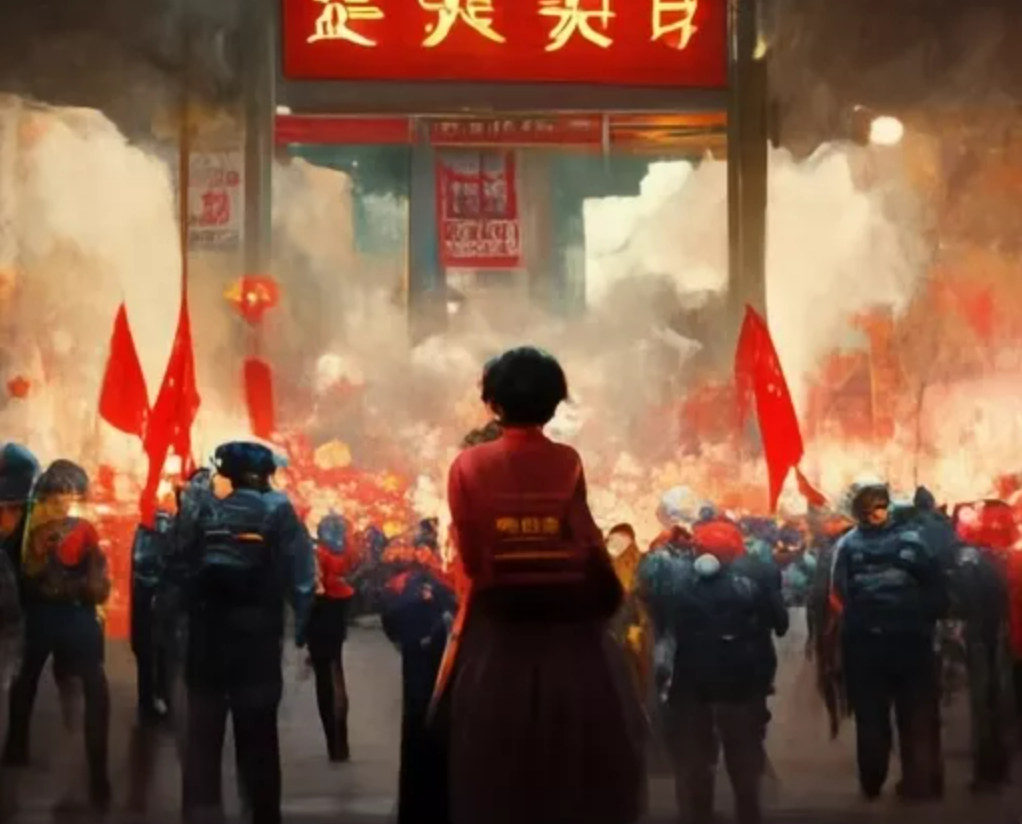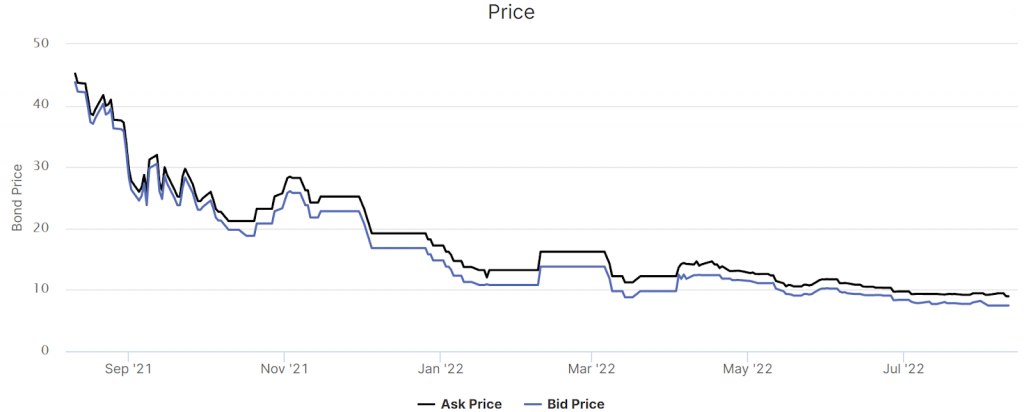In part 3 of this series we detail why people in China are starting to straight out refuse to pay their mortgage.
Then lately there has been much talk of an initially overlooked piece of news. It ties together with the theme of the series, so we will dissect it diligently. It might me the spoiler of a plot twist.
Management of the Henan banking fiasco
Here’s the deal: “Savings accounts” (note the quote marks) in local banks in the Henan province took a loss for what is estimated to be about 6 billion worth of USD. When the news broke, this was affecting 40-50k people at a minimum.
Not a out-of-scale number for China’s extent, but still.
Some questions did come to mind:
- Did the banks fail? No. Actually, they are still up.
- Were the banks unregulated? No, local banks, like any other bank in China, are vouched for by the CCP.
- Did they induce people in investments that somehow went wrong? Well, actually…
All that the depositors did, at least knowingly, was deposit money in their savings account, which was supposed to be devoid of any risks.
What the banks did do instead, was allocate that money in investment products for a profit. This of course happened without explicit consent or knowledge of the depositors, and allowed the banks to position these savings accounts with aggressive marketing strategies advertising for unrealistic interest rates. And it worked well. Depositors flocked in from all around the country to take advantage of high interest rates, in certain instances up to 15%.
But then the domestic market dropped due to the consequences of The Bug, and the pop of the real estate bubble.

In the midst of the scrambling that ensued, what happened is that the corruption schemes and money laundering took over. People in power, and specifically a closed subset of the bank’s investors, had full access to all deposited liquidity. They promptly redirected these funds in order to acquire personal assets overseas. The same old oligarch-type of assets: mansions in Canada, Australia, etc.
Light will probably never be shined upon this part of the story, but what happened and how is pretty clear: the money is not there anymore. People’s savings accounts display their credit on the home banking, but the bank won’t comply with payment requests or transfers, because the money is not actually there.
Now, 6 Billion is certainly a big hit, but clearly not an amount able to cause a nosedive in the Chinese economy. At some point the government will just spring up some money and give it back to the affected people. The bank deposits are insured anyway, for up to 50000 RMB.
So why is this piece of news relevant? Because the CCP botched the management of this crisis in a way that discloses a new emerging reality to us.
Popular uprisings
After the Henan banking fiasco, and after months of being ignored completely, people started to organize themselves in the thousands to confront the banks and the local government. In a more than legitimate push to try to understand what happened. But popular uprisings and confrontations are something that under the CCP rule just can’t be allowed to happen.
And as a matter of fact, this was successfully prevented.
Once.
How? Well, people who booked tickets to Henan suddenly found that their health-code app suddenly turned red.

At the time of writing, under the Zero-COVID policy, no individual is allowed to travel, enter public places, or hotels, without being greenlighted by the health-code app. The health-code system was effectively used not for its COVID-tracking function, but to put constraints over targeted individuals. Nipping the protest in the bud.
This raised more than one eyebrow. People, after months of lockdowns, lost confidence in the Zero-COVID system entirely. This immense approval stress definitely cracked with this new development.
Make no mistake: Chinese people aren’t fools. They knew exactly that the health-code app is just another tool of personal control, but seeing it being used this openly, for illegitimate control purposes, stirred a lot of clamour.
A week later 1000 to 1500 people managed to gather in Henan to protest anyway, despite the restrictions. Their demand was simple: allow us to access our money.
The protests were broken down not by the riot Police alone, but with the simultaneous help of hired thugs working alongside them. All comically dressed with the same civilian clothes. Repressive violence ensued.
Official news coverage of these events are obviously completely absent. But people started discussing this turn of events on social media, and although the censoring machine in China is extremely efficient at muting dissent, word still gets around.
The point I’m making is: Why?
This banking fiasco sprung up in April. The deposits are supposedly insured, and this gives the depositors some rights to have their funds back in a timely manner, at least in part.
Why let the matter deteriorate into public unrest until July, a full 4 months later?
Unrest is the prime example of what the CCP really can’t allow to happen. A public display of outcry in these numbers is a rare thing to see. (The facts of Tiananmen Square taught people better).
What prevented the banking industry from reimbursing the depositors in a timely manner?
Perhaps the reason can be spotted by looking at the bigger picture. In part 2 we briefly spoke about collateral damage of unsustainable systems toward adjacent ones. Remember the domino tiles analogy?
Because of that, the banking system in China, to use the technical term, is in deep s**t.
Banking crisis escalation
At this point it starts to be challenging to enumerate the concurrent threats to the banking sector.

For starters, Chinese banks are heavily invested in the property developers. They own an enormous amount of their debt. Right now, the market is not assuming that these firms will be able to service it. So, that line of credit can be definitely crossed out.

Then there are mortgage boycotts. Banks financed loans for the purchase of house units. Owners of those units are now starting to boycott payments of the mortgage rates. This is baaaaaad on a whole new level:
Those loans now are liabilities. And the banks desperately need the cash flow from mortgage payments in order to finance themselves and offer the bare minimum amount of liquidity that the market needs in order to function. It’s not that they have any other cash pocket to tap into.
And there it goes the second, major line of credit for the banks.

But on a regular, reasonably healthy market, a bank has at least the option to repossess the real estate assets tied to the unpaid mortgages. It’s not something a bank normally would want to do, because it diminishes the value of the asset and is destructive for the society as a whole, but it is an option to at least recoup some cash and write a liability off of their books.
And here is the cherry on the top: in our scenario those house units don’t even exist. They haven’t been built at all. There is nothing to be repossessed.
The liquidity squeeze for the banking system is just extreme. And here the downside of the fractional reserve system starts to kick in.
In case you aren’t ready for this further ride, here is a refresher on the topic:
At the end of the liquidity loop, the fractional reserve trick allows the banking system to take in the circulating money mass, and bounce it around the economy for a total of over 1000% of its initial amount give or take. For a profit, of course.
Isn’t this amazing?
Well, guess what happens when liquidity is forcibly drained out of the system?
Bank runs
In a conceptual banking system where a total of, say, 100$ are circulated, the depositors will have collectively accrued a total of about 1100$ to their name. Each individual takes the amount of its deposits for granted: it is value which is safely stored into the banks.
The system works because all depositors will want to keep their money safe within the bank for as long as needed, and instances of depositors retrieving major amounts of their money are immediately matched by sellers that cash-in and deposit that same amount right back in.
But if this system, as a whole, is met by an anomalous event and is suddenly squeezed out of an amount of money that approaches 100$ (or even far less than that), the mechanism suddenly breaks and as soon as a depositor attempts a substantial retrieval, *poof* the illusion is no more.
Despite everyone being entitled to their deposits, no one can have any money.
What immediately ensues in this case is called a bank run.
And it’s not that we don’t know how they work. We have been dealing with them for as long as banks have existed. The dynamic of the phenomenon is pretty simple:
As soon as the news breaks, the trust in the banking institution is annihilated instantly.
People will want to retrieve immediately all their savings. The resulting stampede is what collapses the system for good.
There are damage control and dampening strategies, to stall the chain of events, but if trust can not be restored on the bank (and things vouched for by the CCP generally have a bad credit) the end result is invariably its collapse.
Or, potentially, as in our case, of the collapse of the banking sector as a whole.
During the Henan banking crisis, depositors were denied access to their funds. The situation was not resolved or managed for a worrying amount of time. In the following weeks, the problem spread like wildfire and depositors all across the country now have extremely tight daily usage limits.
Facing the banks has become an excruciating full-day affair that ultimately results in meaningless excuses.
A generalized bank run has happened, but there is no stampede because of the impossibility to retrieve any meaningful amount of money from the banks.
This in itself would be sufficient to throw the banking system in total chaos. Fear is definitely present. But the worst wasn’t allowed to happen simply because the government stepped in and went on damage control mode.
Closing the menu, in part 5 we will be looking at the most crucial indicator in the evaluation of any macro outlook. People’s sentiment.
I have been building up to this. It’s riveting. Don’t miss it!




